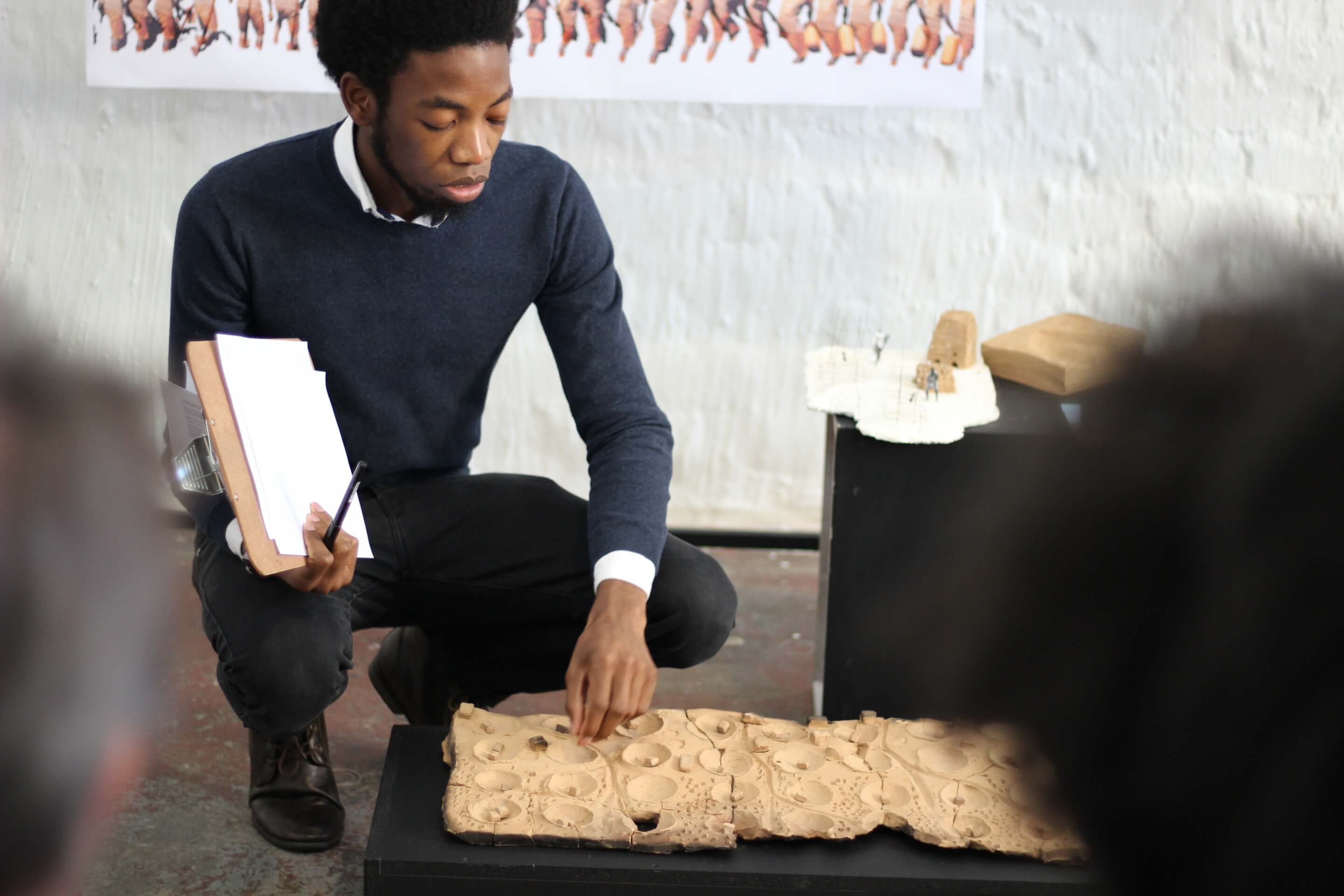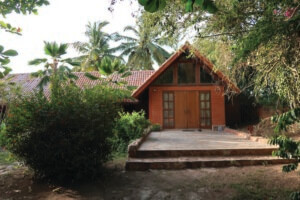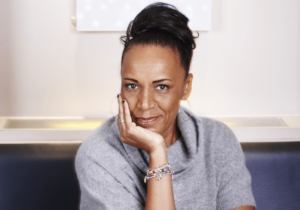Lesley Lokko has been busy since stepping down from her position as dean of the Bernard & Anne Spitzer School of Architecture at City College of New York in 2020. The Architect’s Newspaper sat down with Lokko, currently a visiting professor at the University of Virginia and the Cooper Union, to discuss her new venture, the African Futures Institute (AFI), an architectural school she is founding in Accra, Ghana, and what she’s learned about race and identity during her decades-long career in architectural academia.
The Architect’s Newspaper: Your career as an educator and author has tackled identity and architecture head-on. You also are something of a serial project launcher. What’s driven you to launch the AFI now?
Lesley Lokko: The AFI has been in the background for almost two decades.
I left academia in 2005 to take up a career as a novelist partly out of frustration that academia regarded race and culture as peripheral to the discourse. A chance encounter at a conference in Holland led to a job offer in Johannesburg, where I was put in charge of the master’s program.
The Graduate School of Architecture (GSA) [at the University of Johannesburg in South Africa], which people might see as the launching of another project, was, in some ways, the prototype of the AFI [Lokko founded the GSA in 2015]. I did it for five years, and while the students and the staff were fantastic, I was working 18 hours a day, and I could see my own death warrant. So, I moved to the U.S., only to find myself in a worse situation.
What happened at Spitzer fast-tracked something that’s been at the back of my mind. It’s not launching a new initiative but returning to something that’s been there for a very long time.
What does it mean to launch a new school, rather than to come to an existing program and look for opportunities within some of that infrastructure, as you did at Johannesburg?
There’s an aspect to leadership that can be quite entrepreneurial that I quite enjoy. And in some ways, both Spitzer and the GSA have been instrumental in teaching me what not to do—which is, to go around begging or supplicating for permission.
This venture is less weighed down by the bureaucracy of an institution than many others. I want to keep it quite small, and I want to keep it interdisciplinary.
I know now, as well, to look for partners who really believe in the vision. After the last year, everybody is paying lip service to diversity and inclusion. When it comes down to changing curricula and changing canon, it’s amazing how quickly people fall off the wagon. I guess the experience has made me a bit more discerning about who I jump into bed with.
How do you resolve the tension between the desire to be interdisciplinary and some of the constraints that might come into play with accrediting a school of architecture?
When I gave my very first public lecture about issues of race and architecture, someone in the audience asked, “Listen, are you prepared to accept that if you investigate this relationship, you may wind up undoing architecture?”
I learned at Spitzer, very quickly, that most academic institutions are built to withstand change—not to engender it. The questions of race, identity, culture, power, underpin all canons. If you start up an institution that’s dedicated to unpicking and unraveling and unpacking all of that, what’s its relationship to the professionalization of architecture going to be?
That’s partly why for me this absolutely has to be a postgraduate program, and it may not be professional in the accepted sense of the word. It could be, then, that the AFI actually generates teachers, not architects.

You describe the AFI as a school of architecture that could “teach the global north how to embed diversity, equity, and inclusion in the heart of a built environment pedagogy,” and that you have an ambition to tackle thorny issues. What are the thorniest issues in architecture today?
There is a desire, in academia, to use the “otherness” of students as the catalyst for exploration. We want something that these students of difference can bring to the table, but we don’t necessarily want to do the work to bring that out.
What’s at stake is an unformed desire to bring one’s story, whether it’s the experience of migration, experience of oppression, the experience of trauma, to the table. Yet we say to these students, give me something of yourself, but not too much. Give it to me on my terms. But it doesn’t work like that.
Often, what you get from these students is anger. And that anger must go somewhere—it can’t remain as anger. That process of trying to take a student through the steps required to use that tension productively and creatively is what I’m talking about in terms of a pedagogy that deals with issues of race, and identity, and gender, and otherness.
I found it almost impossible to do that in the States. You cannot do that in 13 weeks, so you wind up with a superficial acknowledgment of difference, without any of the deep work that it takes to bring real difference.
In the same way that Black and other students have been dealing with Western canon for 200 years, in the best possible scenario, all canon is available to everybody. This is not about exclusivity, it’s actually about the opposite. But institutions must accept that it’s going to take time to go through those processes, to mature that canon.
The global South may be teaching the global North a trick or two, partly because in places like Ghana, the regulatory framework around education is more open and allows for this time.
You’ve said that the dual-lens of decolonization and decarbonization will be the foundation of the AFI curriculum. How does this differ from other contemporary curricula?
The first unit of energy for the global North was the slave, the body being the first source of energy, the first productivity, the first exploitation.
I’ve never seen the discourse around sustainability as somehow separate from the discourse around culture. If Blackness or African-ness or otherness or diaspora is a significant component of identity, I want to understand how things like sustainability impact that identity. I don’t want to see it as something that’s separate or added to or added onto the curriculum. I want it to be at its heart.
I keep thinking about the possibility of a school where the two things that are of interest to us are decolonization and decarbonization. How do we take these things like technology, like design, like history and theory, and fold them into these two constructs, rather than the other way around? Part of designing this curriculum is to try and turn it inside out. In a new institute, a new school, we could just do it.
The question of decarbonization and energy and sustainability in the global South also means radically different things. The only possible authentic avenue is to give those questions some space to be articulated and explored slightly differently.
So, the AFI enables you to reframe the entire framework within which educators and students can operate?
There is something about American academia, and I discovered this in South Africa as well, which goes to the issue of decolonization. I consider America a postcolonial society. There’s this fear of not doing things “properly.” One eye is always looking over to Europe. But Europe is no longer the Europe that you people keep looking at. Europe has its own problems now.
This kind of cultural insecurity means that you cling onto these Eurocentric formalist rubrics. Most institutions are terrified of what will replace these rubrics if you get rid of them.
Because there is nothing. Especially in architectural education. In the United States, there is a huge resource of otherness in the heads or deans of most schools matched only by the institutional insecurity of actually making use of any of it.
You’ve said before that real change takes time…
Architecture is a slow-burning profession. Yet there are few other disciplines that are so perfectly positioned. The discipline is quite porous; it can’t really make up its mind as to what it’s going to be, which also makes it very flexible and adaptable.
Then suddenly this whole conundrum appears on the horizon, and I just think—what a perfect discipline to do this! I mean, mathematicians trying to decolonize, I wouldn’t even want to be in that room.
The point of a university is to bring new knowledge into the world. If the school cannot protect the space in which we are allowed to or encouraged to formulate difficult questions, to my mind you might as well pack up and go home.
And if that means undoing the semester system, undoing credit hours, undoing tenure—well, so be it. What’s the alternative? We continue like this? With Band-Aids for the next fifty years until the next set of riots?
Having worked within institutions so much over the past twenty years, I can also understand how difficult it is to make those kinds of changes. But this is the kind of subject matter that demands time—a Band-Aid’s not going to fix it.
And it’s not just the one global South history class that you offer…
No! In the States, I encountered the absolute fear—what do you mean, you want to dismantle the survey course? Not having come from an academic tradition that valued it so highly, I just didn’t understand the panic.
For me the question is, why a survey? When I was sixteen in Ghana, I had a history teacher who decided not to follow the British O-Level curriculum and instead taught history through the lens of four revolutions. That brave decision, to say that history can be understood through the lens of different sorts of experiences rather than chronology, was possible for me in South Africa partly because everything was up for grabs. The student protests of 2015 and 2016 absolutely made an opening in universities that they wouldn’t have had before. The GSA could not have happened in 2013.
I found in the States this year, that while the same movements were happening, the institution’s response was to lock down and proceed, business as usual.
In the American educational context, perhaps this resistance is rooted in the professionalization of the degree, and as a result, the survey course becomes a crutch.
That, and architecture in the U.S. is one of the most risk-averse professions in the world.
But the fundamental conundrum in the United States is that you cannot square the myth of meritocracy with the reality of slavery. They are two fundamentally diametrically opposed narratives. Part of Black Lives Matter and the fall out for universities was the fear that if we really start to examine this movement, we’re going to start undoing ourselves. And then what do we replace ourselves with?
It’s really hard because the U.S. is built on a lie. The crux of the problem of decolonization and decarbonization in existing curricula is that it invites a kind of death wish.










